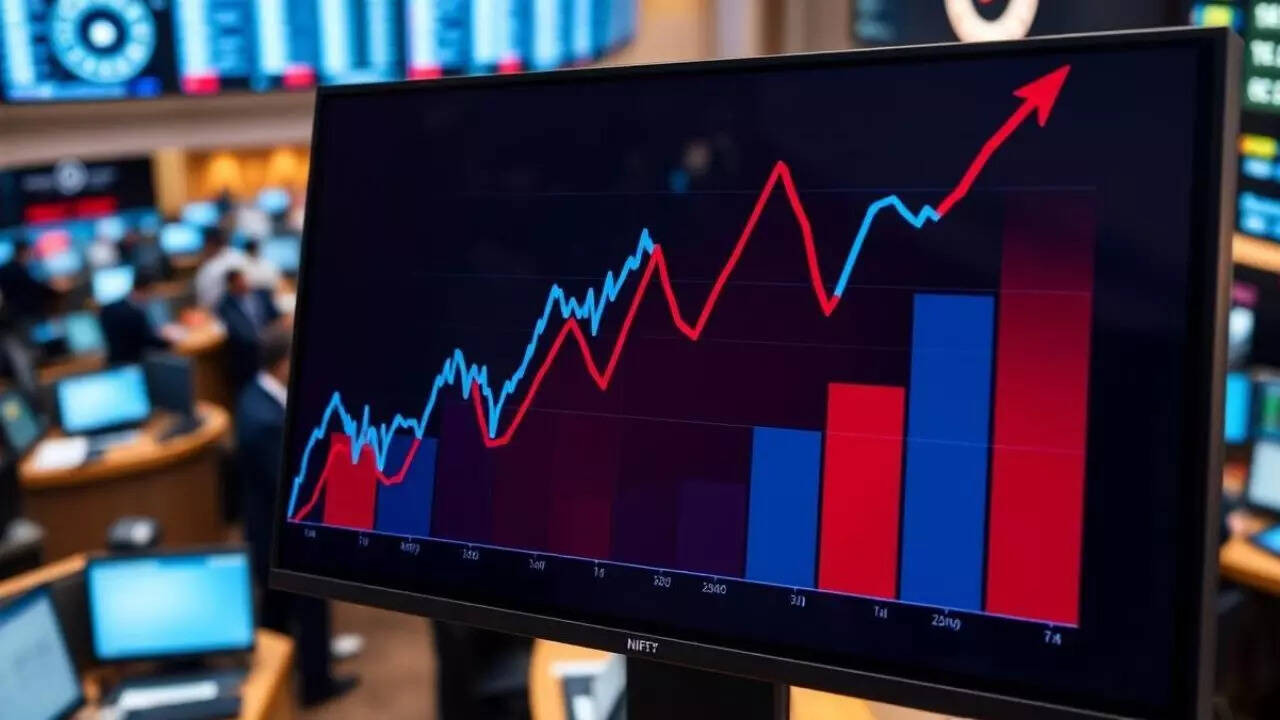Asian stocks mostly climbed following weak US economic data, fueling hopes for potential Federal Reserve interest rate cuts. Investors are keenly awaiting US jobs data and any developments regarding trade talks between President Trump and China’s Xi Jinping. South Korean markets surged, while Indonesia implemented economic stimulus measures.
The Rollercoaster Ride Continues: Asia’s Markets, Rate Cut Whispers, and a US Economy That’s Showing Its Age
Hold onto your hats, folks, because the global economic ride is getting wilder! Just when we thought we were headed for smoother seas, the data throws us a curveball. This week, all eyes have been glued to Asia’s stock markets, riding the wave of optimism generated by murmurs, or rather, loud pronouncements, about potential interest rate cuts by the US Federal Reserve.
For a while, it felt like a party. Wall Street had a monster rally, fueled by hopes that the Fed would finally ease up on its aggressive monetary tightening. Asian markets, naturally sensitive to US economic policy, eagerly jumped on the bandwagon. We saw gains across the board – Tokyo, Hong Kong, Seoul all flashed green. There was a palpable sense that the worst of the inflation battle might be behind us, and that easier borrowing conditions were on the horizon.
But, as always, reality has a way of sobering up the party. The champagne buzz started to fade as some rather… let’s say mixed signals started trickling out of the US economy. The latest data suggests that the engine might be sputtering a little. We’re talking about numbers that hint at a slowdown, a gentle tap on the brakes after what felt like a pedal-to-the-metal approach to growth.
And this is where things get interesting. You see, the prospect of a rate cut isn’t always good news. While it can stimulate growth by making borrowing cheaper, it’s often a sign that the economy isn’t firing on all cylinders. The Fed, after all, doesn’t typically cut rates when everything’s rosy. They usually reach for that lever when they sense things are starting to cool down, perhaps a little too much.
So, the market’s current dance is a delicate one. They want lower rates to boost growth, but they’re also nervous about why those rates might be lowered in the first place. It’s a classic push-pull, a tug-of-war between hope and apprehension.
This uncertainty is reflected in the slightly subdued mood we’re seeing now. While Asian markets are still largely trending upwards, the initial surge of enthusiasm has definitely tempered. The Wall Street rally, once seemingly unstoppable, has lost a bit of steam. It’s like the markets are saying, “Okay, we’re excited, but let’s see the fine print first.”
What’s fueling this cautious optimism? It’s the belief that the Fed might actually be able to pull off that coveted “soft landing” – taming inflation without plunging the US (and therefore the global) economy into a full-blown recession. It’s a tightrope walk, and one wrong step could send us tumbling.
The implications for Asia are significant. Many Asian economies are heavily reliant on exports to the US. A slowing US economy could translate into lower demand for those exports, impacting growth across the region. On the other hand, lower US interest rates could weaken the dollar, making Asian exports more competitive and potentially attracting capital flows into Asian markets. It’s a complex equation with a lot of moving parts.
So, where do we go from here? That’s the million-dollar question, isn’t it? The answer, as always, lies in the data. We need to keep a close eye on the US economic indicators – inflation, employment, consumer spending – to get a clearer picture of where things are headed.
More importantly, we need to understand the nuance behind the numbers. A slight dip in consumer spending doesn’t necessarily spell disaster. It could simply be a sign that people are becoming more cautious and less reliant on borrowing, which, in the long run, might actually be a good thing.
The next few weeks will be crucial. The Fed’s next meeting will be a key event, as will the release of fresh economic data from both the US and Asia. We’ll be watching closely to see if the “soft landing” scenario remains a viable possibility, or if the markets are forced to brace themselves for a bumpier ride.
Ultimately, the global economy is a complex, interconnected web. What happens in the US reverberates across the world, and Asia is particularly sensitive to these shifts. Navigating this environment requires a cool head, a clear understanding of the underlying trends, and a healthy dose of cautious optimism. Because in the world of finance, the only certainty is uncertainty, and the rollercoaster is always ready for another climb.
📬 Stay informed — follow us for more insightful updates!







